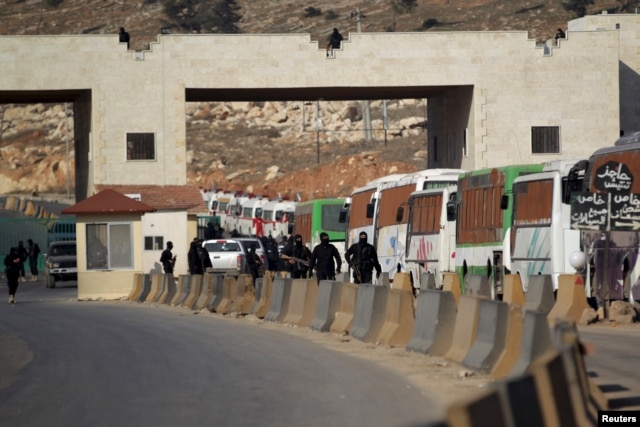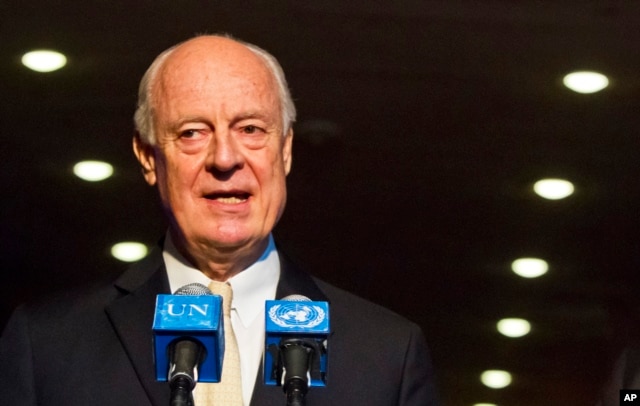Twin Bombings in Syria’s Homs City Kill at Least 19

Last updated on: December 28, 2015
Twin bombings in the Syrian city of Homs have killed at least 19 people on Monday, with a suicide attacker detonating an explosives belt as onlookers assessed damage from the first blast.
The explosions hit the central city’s al-Zahraa district. The precise death toll remains unclear, with government-run Syrian media reporting 19 people killed and the Syrian Observatory for Human Rights citing 32 dead. Scores more were wounded.
It was the second major attack in Homs since a cease-fire deal between warring sides took effect earlier this month, clearing the way for the government to take over the last rebel-controlled area of the city.
Evacuation under way
Meanwhile, the evacuation of three other towns has begun, following a U.N.-backed humanitarian deal reached in September between the government and rebels who oppose President Bashar al-Assad’s administration.
In an unprecedented multinational coordination, more than 120 fighters and wounded on Monday began leaving Zabadani, the last rebel bastion on Syria’s border with Lebanon. They will then fly from Beirut to Turkey before relocating to opposition-held areas in Syria, Observatory head Rami Abdel Rahman said.
Fighters from a coalition of rebel groups called «Jaish al Fatah», also known as «Army of Fatah» (Conquest Army), secure the area while buses evacuating fighters and civilians from the two besieged Shi’ite towns of al-Foua and Kefraya in the mainly rebel-held northwestern province of Idlib, arrive at the Syrian-Turkish border crossing of Bab al-Hawa, Dec. 28, 2015.
Another 335 people, including civilians, began traveling from two regime-controlled villages in northwestern Syria to other government areas, also via the neighboring countries, he said. Residents of the mainly Shiite villages of Fuaa and Kafraya were to cross into Turkey, then fly into Beirut and travel overland into Damascus.
A roadmap for Syrian peace
In a rare show of agreement, the U.N. Security Council unanimously approved a resolution on December 18 endorsing an international roadmap for Syrian peace.
On Saturday, U.N. Syria mediator Staffan de Mistura said he aimed to convene peace talks January 25 in Geneva. He said those talks would include the «broadest possible spectrum of the Syrian opposition and others» and that they will require the «full cooperation» of all parties to the conflict.
FILE – U.N. Special Envoy for Syria Staffan de Mistura speaks during a news conference, Nov. 19, 2015, at U.N. headquarters.
Momentum for a peace deal evaporated as the conflict became more complex with the addition of Islamic State militants seizing large portions of northern and eastern Syria.
Diplomats such as U.S. Secretary of State John Kerry have promoted ending the civil war as the most important step in defeating Islamic State fighters and bringing stability to the region.
More than 250,000 people have died in the Syrian conflict, which has forced more than 4 million others to flee the country since it began in 2011.




